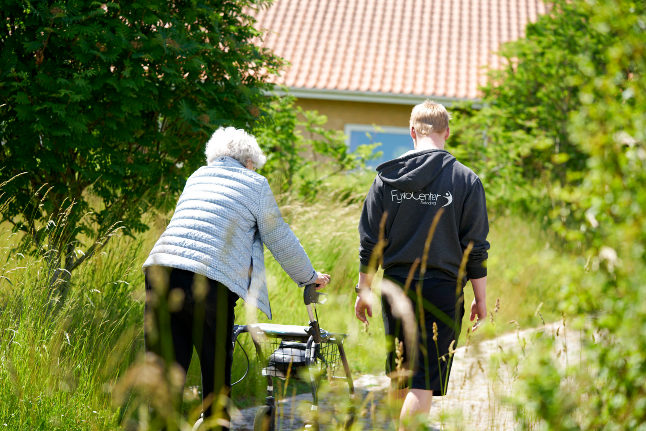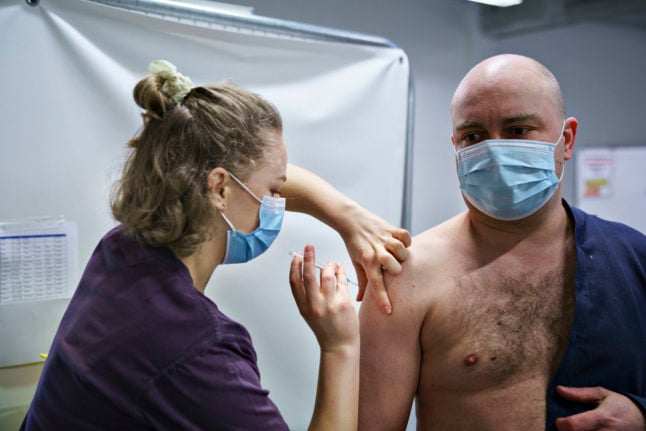Hospitalisations
The number of people being treated for Covid-19 in hospital is arguably the most important metric to look at now the overwhelming majority of vulnerable people in Denmark’s population have been fully vaccinated, and it has been falling steadily.
On September 10th, when the last restrictions were lifted, there were 132 people being treated in Denmark’s hospitals, 29 in intensive care. A week later there were 105 (24 in intensive), and a week after that there were 87 (17 in intensive), and this Sunday there were 82 (12 in intensive care), the lowest number since August 8th.
Cases
On September 10th, there were 557 new cases of coronavirus detected, a number which had fallen to 368 this Sunday. There has been a slight rise since around September 13th, when the number of cases fell under 300 for a few days, but there are still few signs that infection rates are starting to increase steadily.
Deaths
According to numbers taken from the ECDC by Our World in Data, 21 people died of Covid-19 in Denmark in the week running up to September 10th, 17 in the week running up to September 24th, and 19 in the week running up to October 1st, showing the death rate staying pretty stable, with possible signs of a slight uptick over the last week.
Are there any causes for concern?
Denmark’s health minister Magnus Heunicke announced over Twitter on Tuesday that the “reproduction number”, the number of people each infected person goes on to infect in turn was then estimated at 1.1, meaning every ten people infected will give the virus to 11 more, meaning the infection rate is rising gently.
“The number is subject to uncertainty, but other key figures also indicate that the decline in the epidemic has stopped and that we are now in a stable or slightly rising epidemic,” he wrote.
Kontakttallet er beregnet til 1,1. Tallet er behæftet med usikkerhed, men også de andre nøgletal indikerer, at faldet i epidemien er stoppet, og at vi nu befinder os i en stabil eller svagt stigende epidemi. Vigtigst at indlæggelsestallene er lave og at stadig flere revaccineres. pic.twitter.com/zlDvzMtp3U
— Magnus Heunicke (@Heunicke) September 28, 2021
There are also growing numbers of breakthrough infections being detected among elderly people who have been vaccinated.
In the week ending September 26th, 46 fully vaccinated people over the age of 60 were admitted to hospital with Covid-19 infections, up from a low of just two in the week ending July 2nd.
In contrast, among those under the age of 50, there were just 7 fully vaccinated people admitted to hospital in the week ended September 26th, compared to 21 who were unvaccinated or only partly vaccinated.
So what do the medical experts think?
“I’m happy that the numbers are in general so stable, that the number of people being treated in hospital is a good way under 100,” Åse Bengård Andersen, the head doctor at the infectious disease division of Denmark’s Rigshospitalet (national hospital) in Copenhagen. “This is a number we can easily handle.”
Troels Lillebæk, from Denmark’s SSI infectious diseases agency, said that the number of infections among the vaccinated elderly was a cause for some concern, however,
“Breakthrough infections are increasingly being seen, especially among older people who have not received the third dose of vaccine yet,” he told the VG newspaper. “Some of them have other serious diseases that affect the immune system. But overall, the vaccines provide good protection against serious illness.”
Andersen said that the Danish health authorities should take advantage of the current low numbers to make sure they are doubly prepared for a resurgence in infections.
“We’ve been given a bit of breathing room where we can get various things we need to do in place, like giving a third booster jab to those who need it.”



 Please whitelist us to continue reading.
Please whitelist us to continue reading.
Member comments